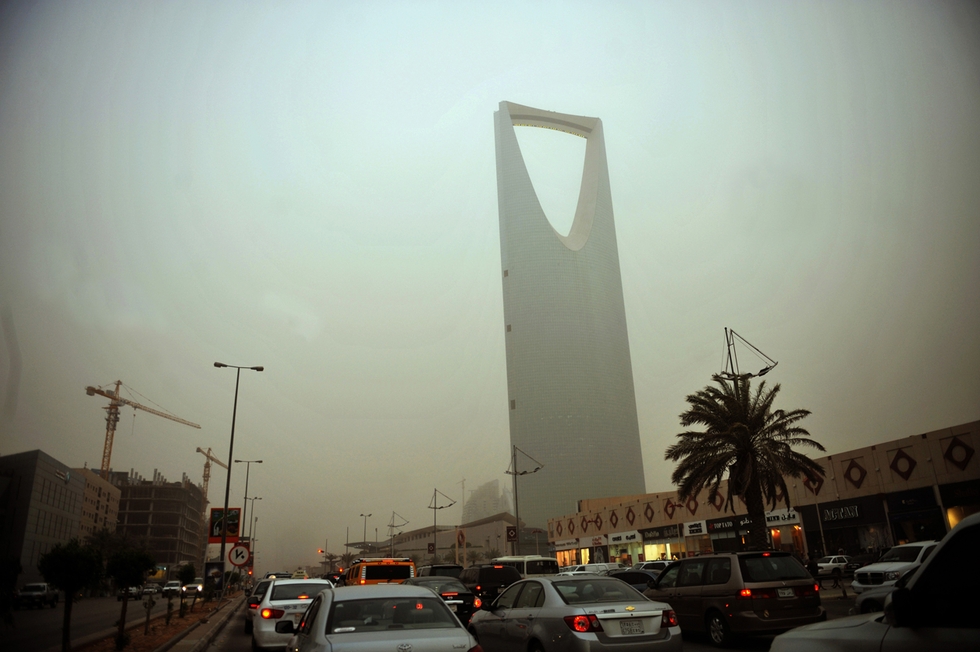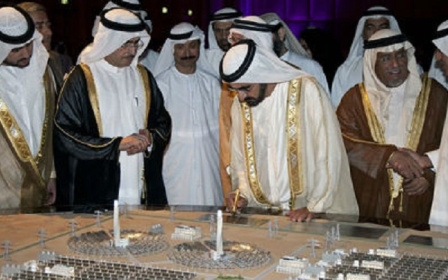Saudi Arabia: Going green or is it all a mirage?

Saudi Arabia, the world’s biggest oil exporter, has traditionally been among the most sceptical of nations when it comes to tackling climate change, obstructing rather than encouraging international action on the issue.
It might then come as a surprise to some observers to learn of the desert kingdom’s far-reaching ambitions for harnessing renewable energy.
In July, Khalid al-Falih, the energy minister, called for tenders for the country’s first large-scale wind farm, to operate in the Al Jouf desert region in the north of the country and set to produce 400MW of electricity,
In the same area a 300MW solar installation is planned, part of an overall strategy to turn Saudi Arabia into what Falih describes as a ”solar powerhouse”.
Altogether the aim is to spend a whopping $50bn on renewables over the next six years, with the target of producing 30 percent of the country’s electricity from renewables by 2030.
So has Riyadh suddenly undergone a change of heart on climate change? Is the royal family, under the guidance of its newly anointed and all powerful crown prince, Mohammed bin Salman, going green?
The answer, unfortunately, for those banging the drum for action on a warming world, is a resounding no.
Starry-eyed talk
The Saudi push into renewables is all about ensuring ongoing oil export revenues rather than tackling climate change.
From Riyadh’s point of view, the issue is straightforward. Though there has been much starry-eyed talk about diversifying the economy, Saudi Arabia is – and will remain for years to come – overwhelming dependent on oil for its revenues.
Oil is the life blood of the kingdom. Despite several attempts to wean itself off the fuel, the petroleum sector still accounts for about 90 percent of the country’s export earnings, 87 percent of budget revenues and more than 40 percent of gross domestic product.
The Saudi bean counters are looking into a none too bright future. The state’s finances have been severely hit by the drop in oil prices over recent years.
A country once overflowing with petro-dollars is having to endure what seems to be a continuous series of budget crises.
A 2011 report by Chatham House, the London-based think-tank, said that if Saudi energy use was not curtailed, the country could become a net energy importer by 2038
Even if – and it’s a very big if – the oil price bounces back to more than $100 a barrel from its present level hovering round the $50 mark, it’s unlikely revenues from oil exports, in the medium and long term, will achieve previous levels.
The reason is the steep rise in domestic demand for oil. Saudi Arabia’s fast-expanding population has been sucking up growing quantities of oil to fuel cars and for air conditioning units in homes and shopping malls and at other enterprises.
At present about a quarter of oil produced is used domestically with overall domestic energy use growing by between 7 percent and 10 percent per year.
That means that as the years go by, there will be less oil for export and depleting revenues; a 2011 report by Chatham House, the London-based think-tank, said that if Saudi energy use was not curtailed, the country could become a net energy importer by 2038.
Free energy
Hence the push for renewables. The Saudi planners have big ambitions; in 2010 the kingdom set a target of installing 41GW of energy by 2040 from a mix of wind, solar and nuclear facilities. At least a third of the nation’s electricity would, according to this original plan, be produced by solar facilities.
Though those plans have been scaled back, Falih, the energy minister, said that within six years Saudi Arabia will be producing enough electricity from renewables to power the equivalent of three million homes.
“As we enter the second half of the year, we remain committed to ensuring our ambitious programme remains on track to deliver value and opportunities targeted by the programme,” he said.
There are big doubts about whether those ambitions will be fulfilled. A National Renewable Energy Programme has been subject to a number of budgetary cutbacks plus frequent changes in policy due to ministerial and bureaucratic shake-ups.
Gas-guzzling cars run for virtually free on Saudi roads. Pollution is on the increase in many of the kingdom’s cities as rampant oil consumption continues
There have been numerous delays in calling for tenders for various projects. Though foreign investors and Saudi private companies might be tempted by government talk of privatising the energy industry and by the lure of multi-million-dollar state spending on renewables, they are likely to put off by the structural inefficiencies inherent in the sector.
Energy – as with most other areas of life in the kingdom – is underpinned by a tacit agreement between the government, that is, the ruling family, and consumers. The rulers are free to govern in their own strict, hierarchical way as long as, in return, they guarantee certain rights to their subjects such as free education and medical care, no taxes, and virtually free energy.
A multi-billion-dollar energy subsidy regime based on cheap oil ensures low prices for the consumer but encourages wastefulness on a massive scale – and drives up domestic oil consumption.
Gas-guzzling cars run for virtually free on Saudi roads. Pollution is on the increase in many of the kingdom’s cities as rampant oil consumption continues.
Though there are plans to generate more power from gas, the bulk of electricity is at present oil-fuelled. Charges are so cheap that many consumers run air conditioning units constantly, even when they are away from home.
A trap of their own making
As global warming bites and the Gulf region in particular heats up even more, the demand for air conditioning is set to increase, meaning more domestic oil consumption.
Water charges are also cheap, or non-existent. Yet Saudi Arabia is one of the most water-scarce countries in the world, with groundwater resources disappearing fast. At present the kingdom uses 1.5 million barrels of oil per day to fuel its desalination plants – more than the entire daily consumption of the UK.
The Saudis are caught in a trap of their own making: they want to have more renewable energy in order to limit domestic oil consumption and save more oil resources for export.
At the same time their own subsidy regime – the World Bank calculates that 10 per cent of GDP is spent on subsidies – encourages rampant domestic oil use.
Encouraging renewables and new forms of energy in such a subsidy-driven market is difficult, if not impossible.
The irony is that with its vast areas of desert, strong winds and abundant sun, Saudi Arabia does have the basic ingredients for turning itself into a powerful renewables energy producer
In recent years, particularly under the strategies laid down by the crown prince, there have been various edicts aimed at shaking up the energy sector and removing subsidies. So far such moves have been very modest, with the government tending to quietly back down at the first indication of public disquiet.
The irony is that with its vast areas of desert, strong winds and abundant sun, Saudi Arabia does have the basic ingredients for turning itself into a powerful renewables energy producer. Yet, even with more coherent energy policies, there are still practical problems associated with renewables.
Increasing dust and sand storms throughout the Middle East, in part caused by rises in temperature and other changes in climate, could interfere with the turbines on wind farms. Dust particles also coat solar panels and severely affect energy generation.
Ultimately, the drive for renewables in Saudi Arabia could be defeated both by the contradictions in government policy – and by climate change itself.
- Kieran Cooke is a former foreign correspondent for the BBC and the Financial Times, and continues to contribute to the BBC and a wide range of international newspapers and radio networks.
The views expressed in this article belong to the author and do not necessarily reflect the editorial policy of Middle East Eye.
Photo: Cars drive past Kingdom tower amid a sand storm in Riyadh (AFP)
Middle East Eye propose une couverture et une analyse indépendantes et incomparables du Moyen-Orient, de l’Afrique du Nord et d’autres régions du monde. Pour en savoir plus sur la reprise de ce contenu et les frais qui s’appliquent, veuillez remplir ce formulaire [en anglais]. Pour en savoir plus sur MEE, cliquez ici [en anglais].





